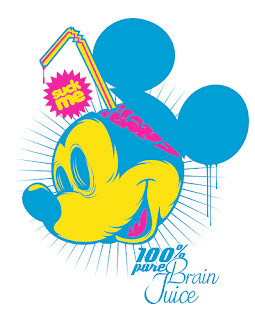Sam Gennawey's Blog, page 18
June 20, 2012
HARRY POTTER AT IOA CELEBRATES 2 YEARS - PART 3
Now for the final installment of the preview artwork for the Wizardry World of Harry Potter at Islands of Adventure in Orlando. Happy 2nd birthday!
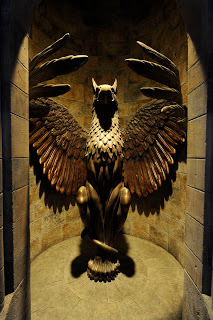
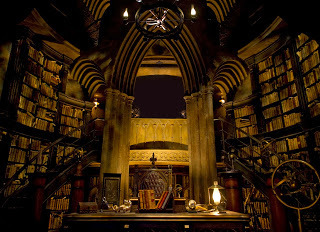
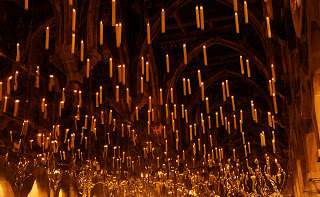
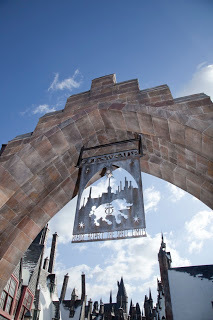
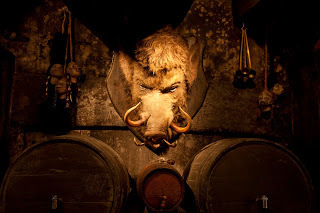
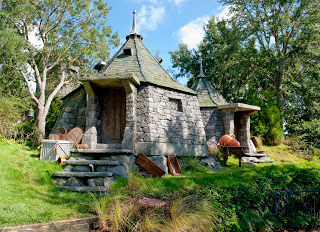
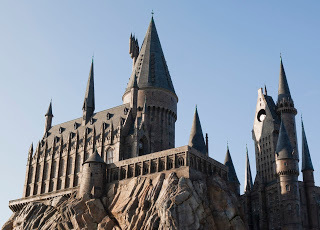
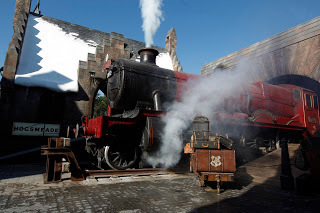









Published on June 20, 2012 20:29
June 19, 2012
HARRY POTTER AT IOA IS 2 YEARS OLD - PART 2
Here are more examples of preview artwork sent out to the press prior to the opening of the Wizardry World of Harry Potter at Islands of Adventure in Orlando.
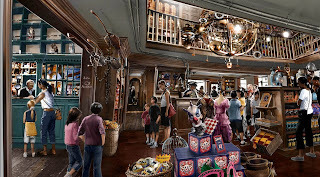
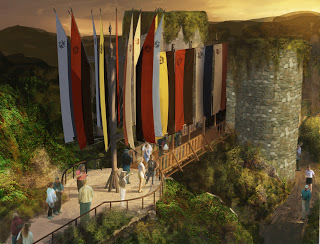
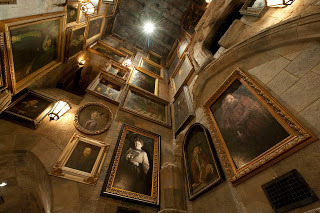
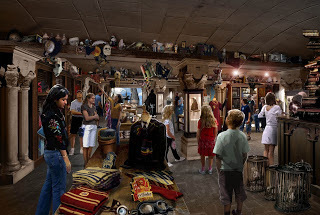
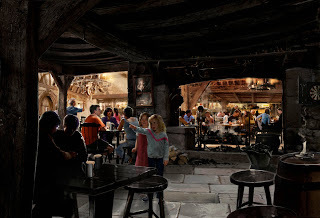
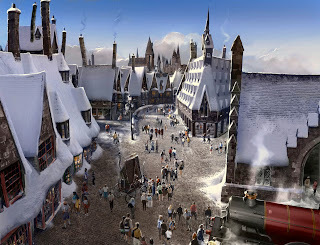
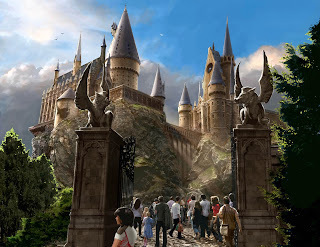








Published on June 19, 2012 03:30
June 18, 2012
HARRY POTTER AT IOA IS 2 YEARS OLD - PART 1
In honor of the second anniversary of the Wizardry World of Harry Potter at Islands of Adventure in Orlando, I thought it might be fun to take a look at some of the preview drawings sent to the press.
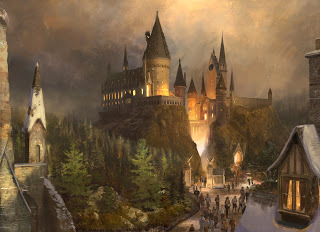
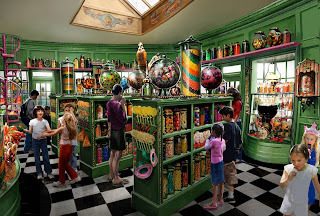
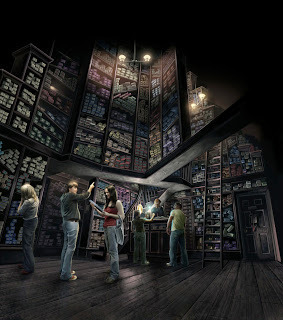
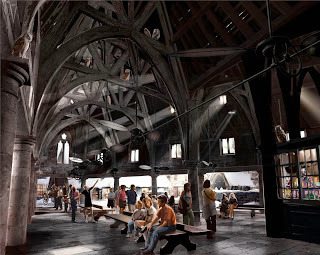
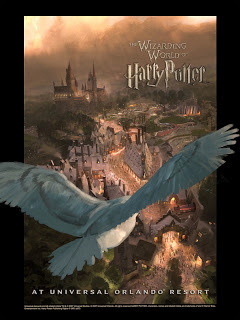
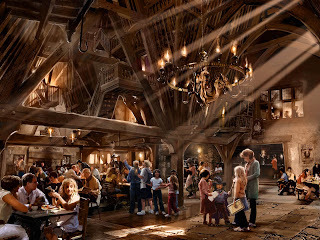
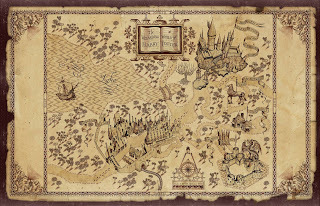
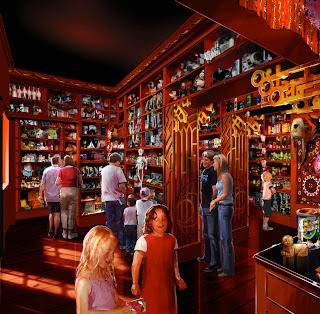









Published on June 18, 2012 02:00
June 11, 2012
Book Review: Building A Dream
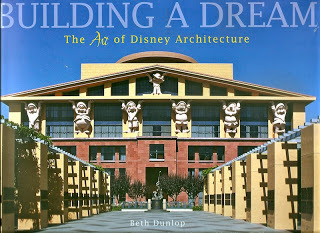
BUILDING A DREAM: The Art of Disney Architecture
Beth Dunlop2011Disney Editions208 Pages$60
Building A Dream is an updated version of a first edition printed in 1996. The two books may share the same title but there are both worthy additions to your collection in their own right. In the fast paced world that is The Walt Disney Company, a lot of things have happened since 1996.
Let’s start with the obvious. The book is beautiful and contains hundreds of photos that show off Disney architecture at its finest. However, I noticed, for good or bad, virtually every photo showed off the building but was devoid of people.
More importantly is Dunlop’s critical eye and talent in describing not only what you are seeing but also what was the design intent. The book is a comprehensive look at Disney architecture that reaches far beyond the theme parks. The book starts with an overview of the grand tradition of architectural design, which began with Disneyland.
““Urban planners study Disneyland to understand ideas of proportion and perspective and to learn, more technically, about the flow of pedestrians and the placement of public spaces. Disneyland simply changed the way we think.”
Disclaimer: In a conversation with Ms. Dunlop she mentioned an analysis I once did applying a planning tool called the Urban Transect that shows the proper hierarchy for town development to Toontown at Disneyland.
“Ironically, Mickey’s Toontown was actually invented for the 1988 movie Who Framed Roger Rabbit. In its three-dimensional form, it actually creates a town real enough that planner and blogger Sam Gennawey was able to create a detailed analysis of the way in which it portrays what New Urbanists call The Transect, showing the proper hierarchy for town development.”
Apparently it made an impression and I am cited in the book on page 26. The fact that my name is mention in the book in no way influenced this review other than I think it is pretty cool to make it to the index.
“With its nineteenth-century architecture, Main Street U.S.A. was a major revelation, and in many ways is one of Disney’s great contributions to American life. The small-town sensibility of the architecture reaffirms the beauty and joy of the American streetscape. The buildings represent a pastiche of styles and were built at a scale that reinforces the pedestrian experience.”
From Disneyland we move on to Walt Disney World with plenty of concept artwork and outstanding photos. In some cases the photos are expanded to cover both pages. There are a lot of examples of conceptual artwork placed next to the built product. One entire chapter is dedicated to the town of Celebration.
“By extrapolating familiar approaches to design (among them, the generic late-Victorian style of Main Street), Disney offers up memorable architectural symbols that are much greater than the proverbial sums of their individual parts. John Hench referred to these as “archetypal truths,” adding that the visual symbol is the essence of the painter’s genius.”
Next stop are the hotels. There is an especially loving look at the three hotels from Peter Dominick (Disney’s Grand Californian, Disney’s Wilderness Lodge, Disney’s Animal Kingdom). There is also a concentrated look at the two Post-modern monuments from Peter Graves, the Swan and Dolphin. It is an interesting contrast in how designers go about their work. Most of the resorts at WDW get a treatment. I will guarantee you will not look at these structures quite the same way after reading the book. Dunlop tries to put the hideous design of the value resorts into context with just enough intellectual shine as to build a case. However, I am still not buying it.
One of the legacies of Michael Eisner’s run at the top of the Disney corporate ladder was a commitment to significant architecture. This extended to office buildings. There is one chapter that gives you a chance to peek inside of these buildings. Did you know that the Orlando Team Disney building features the largest sundial in the world? Even service structures like the WDW fire stations and the McDonalds get their day.
While I was reading Building A Dream: The Art of Disney Architecture by Beth Dunlop and came to realize that Walt’s vision of EPCOT sort of actually exist and it is in Marne-la-Vallée region of France. Along with the theme parks and resort hotels there is a 290-acre mixed-use development by the architectural firm of Cooper, Robertson. All of the land uses are within a radial highway and bisected by a mass transit train system (the TGV and RER lines) connecting to other regions. The neighborhood was designed around “a framework of boulevards, streets, and large and small squares and parks.” This vision is much closer to what Walt was seeking then what happened in Florida.
The New Amsterdam theater in New York, the Team Disney building in Anaheim, the newer buildings on the Walt Disney Studios lot, and all of the other projects (including the cruise ships) that came online over the past two decades.
This is not the typical Disney book. It is a serious look at a very narrow topic – architecture and the magic of placemaking. It is stunning to look at and for that reason alone should be a consideration for your library.
I purchased this book at the Disneyana store on Main Street USA using my AP discount.
Published on June 11, 2012 09:00
June 8, 2012
THE 'E' TICKET MAGAZINE
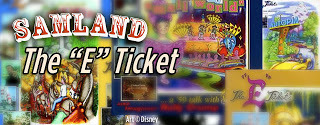 Leon and Jack Janzen grew up in the San Fernando Valley. Their first visit to Disneyland was in 1958. The brothers were hooked. The became frequent visitors to the Park and began to collect souvenirs, photos, and memories.
Leon and Jack Janzen grew up in the San Fernando Valley. Their first visit to Disneyland was in 1958. The brothers were hooked. The became frequent visitors to the Park and began to collect souvenirs, photos, and memories.Many years later, in the Spring of 1985, they read a Disney News article about Disneyland collectibles by former Disney Chief Archivist David R. Smith. The brothers were inspired and decided they would produce a newsletter for dealers and fans that collected vintage souvenirs from Disneyland.
LEARN MORE AT MICECHAT
Published on June 08, 2012 07:51
June 6, 2012
STORYBOOK LAND CANAL BOATS
It is the Fall of 1955 and Disneyland had just opened to great fanfare. You have decided it is time to check out what all the fuss is about so you pack your family into the station wagon and head off to Anaheim for your very first visit.
Once you arrive through the front gates you are amazed at how much there is to take in. Over in Adventureland is the Jungle Cruise, which is unlike anything you have ever seen before with its man-made alligators, giraffes, and elephants. In Frontierland, you have many options when it comes to touring the backwoods. You can choose from the Pack Mules, Conestoga Wagons, or a Stagecoach. On the Rivers of America is the Mark Twain paddle-wheeler, the first of its kind to be built in decades. Over in Tomorrowland you can choose to go on the thrilling Flight To The Moon or hover above Earth in Space Station X-1.
Of course, the heart of Disneyland is Fantasyland, which is filled with family favorites such as Peter Pan’s Flight, Mr. Toad’s Wild Ride, and Snow White’s Adventures. As you go north in Fantasyland you come across an attraction where the Cast Members drafted a hand written sign that said, “This ride is not complete.” They were trying really hard to lower the public’s expectations. But why?The Canal Boats of the World promised a ride on the “Boats of Holland, France, England, and America travel through canals which pass the fabulous sights of Fantasyland.” The reality, as former Cast Member Bob Penfield noted, was boats with unreliable outboard engines loudly moving slowly through canals that featured bare banks filled with weeds labeled with scientific names. That is when the boats were not broken down, which was frequent. Penfield said, “They still wanted to ride it. So, the boat would go around land you’d tell them what you knew the ride was going to be…it was kind of a preview of the Storybook Land Canal Boats.” Less than a year later on June 16, 1956, the Canal Boats are no more and they are replaced with another “temporary” attraction - the Storybook Land Canal Boats.
In 1952, Walt was one of the first visitors to Madurodam in Holland. The park was made up of miniature architectural landmarks and landscapes. When he was developing the idea of an amusement park across the street of the Burbank studio, one of the very first plans included a “Gravity Flow Canal Boat.”
In some ways, the Storybook Land Canal Boats is a direct descendent of Walt Disney's Disneylandia project that predates Disneyland. At the time, Walt was working on building 24 "Norman Rockwell-type" miniature stage sets that would travel from city to city by train. Working on the project were some of the very first Imagineers including Ken Anderson, Fred Joerger, Harriet Burns, Roger Broggie, Wathel Rogers, and Harper Goff.
Walt would come up with an idea, get a few people to work the problem, and then be very flexible when it came to change until he was made up his mind. Then that was it. One earliest ideas for the attraction was Gulliver's Travels through Lilliputian Land with animated figures but that proved to be impractical. Another idea was to integrate the new Chicken Of The Sea pirate ship lagoon with the canal boats circling the ship and then returning to the canals. In the area where there is a quilt made of plants, the original proposal also included a giant’s head and shoulders as if he were resting under a blanket. He would have limited animation including moving eyes and his head gently rocking side to side. Walt killed the idea because it would spoil the tranquil feeling of the ride.
In the end, Walt called on “all the genius available at the Studio to recreate, in miniature, three-dimensional scenes from the world’s great folk tales” and enter “new worlds of enchantment.” Imagineer and model builder Harriet Burns said, "Walt came in and he said he had seen miniature cities, both in Canada and in England, and he was most impressed with the one in England. He recalled how charming it was, and how kids and families could walk along the roads and between the buildings. It really intrigued him.” Burns added, "Walt considered this a temporary attraction." Walt said, "“We can do this little ride, and it will be filler for the moment. Later on we can take it out and put something else there.”
The remodel of the Canal Boats was part of a $2 million expansion of Disneyland that included the Skyway, the Astro-Jets, the Rainbow Mine Train, and Tom Sawyer Island. The models were scaled one-inch to one-foot and were made primarily of plywood covered in fiberglass. Walt wanted the sets to be design as if the characters were just out of sight. He was influenced by the Thorne Collection of miniatures that were on display at the 1939 San Francisco Golden Gate International Exposition and now reside in at the Chicago Art Institute.
The level of detail was beyond anything anybody could expect. Harriet Burns recalled a time when she was working on “very elaborate stained glass windows for the church.” The window was designed by Frank Armitage. Burns said, “I was doing all the leading, and working out all the window designs and color. I got to work with the metal shop. I worked the machinery with my foot, and cut the lead pieces, and then beveled them. I really enjoyed that. We really didn’t need to do that – we could have just put celluloid behind Plexiglas. But at that time Walt loved model making, and he loved detail, we did it that way.”
Burns “had cut out 360 pieces of lead for this one great big church window, and Walt came in and picked it up – and I hadn’t soldered it together! It just scattered everywhere! But that is how hands on he was! I picked it up and said, ‘Oh, no problem Walt, no problem.’” What the model builders learned was “if Walt was coming in – have everything glued down because he wanted to play with it so badly!”
Walt was obsessed with the details. Miniatures were his passion. “I hand-hammered all the locks and pulls, and the mailboxes for Moley’s House,” Burns said “I made them out of copper and soldered them all. All of the gutters were soldered copper – every realistic detail that you could think of.” She added that “nobody could really see it, but Walt knew it was there – that was the good part.” When Walt would visit Burns said, “It was so marvelous to see his eyes twinkle, and to see how delighted he was with our toys – well, his toys! He did think of our place as a toyshop.”
The little structures are supported by an amazing feat of landscape architecture magic. Artists used stunted trees, bushes, and fine grasses to create the miniature flora. In an article about the attraction in “E” Ticket magazine, they discovered that Disney’s landscape designer Bill Evans was able to hunt down “a type of evergreen tree found in Van Damme Beach State Park in Northern California for the Black Forest [behind the Seven Dwarfs house]. They are more then 100 years old and are naturally dwarfed. Since they were protected Disney had to buy some from an adjacent landowner who was happy to sell the trees.”
Along with the model buildings and richly detailed landscape were new Dutch Canal boats built by Robert Dorris Boat Works. “E” Ticket noted that “they were converted from gas outboard motors to electric and are individually powered by direct chain drive from the propeller shaft to a GE motor.” There were five different styles of boats, some with teapots on the roof, another with two tillers, while another had miniature stairs. They were sixteen feet long and were guided on a rail like the Jungle Cruise. The initial Fleet was twelve boats but that grew to fourteen.
The attraction opened on June 18, 1956.
The current loading dock is located where the Midget Autopia used to be. Before that, the queue was in front of Monstro the Whale. Guest would be startled when he would occasionally blink his eye and blow his whistle. The little lighthouse was the ticket booth. You leave Fantasyland by entering through the whales mouth, which is not consistent with the film. Walt decided that he was spending a lot of money to build the whale and he wanted to make sure that guests got a good look.
One of the standout landscapes is Gepetto's Village. Gepetto's shop has tiny toys hanging from the windows. Pinocchio even has his own mailbox. The backdrop is the Swiss Alps, which helps to hide the Casey Jr. Train. In later years, the mountain backdrop would blend seamlessly with the Matterhorn. From Gepetto's Village is a bridge that leads to Pig Island with miniature oak trees and the Big Bad Wolf nearby. Dividing the canal is Peter Pan’s London Park. The park has fully mature miniature trees and a gold statue of Peter.
Along one bank is a collection of structures from Alice in Wonderland including Alice’s Cottage, the Old Mill, the Church with the stained glass window, and, of course, the Rabbit Hole.Along another bank is Toad Manor, home of Mr. Toad. The model was so inspirational that the facade was copied and applied in full scale in front of the revamped version of Mr. Toad's Wild Ride in the remodeled Fantasyland of 1983. Further along the canal is the home to the Seven Dwarfs with their diamond mine nearby and 150 year old plus dwarf trees. The highest visual element within the attraction is Cinderella Castle. The castle is over 15 feet tall and uses forced perspective to appear even taller. The obsession with detail was so extreme that the roof of the castle is covered in gold-leaf.
Just beyond the Giant's quilt are three old windmills. Once again the attention to detail was so important that Walt suggested that tulips be planted in front of the windmills. So the Imagineers hired a horticulturist from the San Francisco Bay to locate miniature tulip plants that would fit the scale of the windmills. They found what they were looking for in New Zealand. The only problem was that the plants had 18 inch stems. This meant they had to be buried and hidden. In the end, they could not keep the plants alive so they were removed.
The final scene leads to the boat storage area and has been dubbed Never Never Land because "we never never go there." In 1994, additional scenes were added from The Little Mermaid and the town of Agrabah from Aladdin.
I mentioned earlier that Walt originally envisioned the Storybook Land Canal Boats as a temporary attraction, a placeholder for something grander. In early 1957, a replacement was already in the works. The attraction would be called Rock Candy Mountain and it would incorporate the Casey Jr. train. Harriet Burns said, "Rock Candy Mountain was Walt's idea.” As was the practice at WED Enterprises, a model was commissioned. Burns said, “We created a huge clay mountain, and Walt ordered every kind of candy that he remembered from childhood. Claude Coats went to Toluca Mart, a grocery store near the studio. He got every kind of candy they had: mints, fudge, bridge mix, peanut brittle, and many other things. We used all of it on ‘Candy Mountain.’ Fred [Joerger ] had a sweet tooth and he’d say, ‘One for you, one for me’ [speaking to the mountain]!” According to D23, when the project was put aside “the model was wheeled out to the parking lot and became a giant candy-covered bird feeder!”
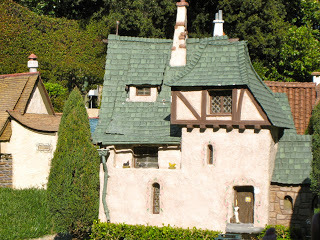
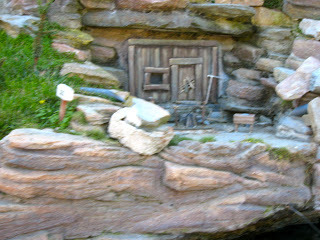
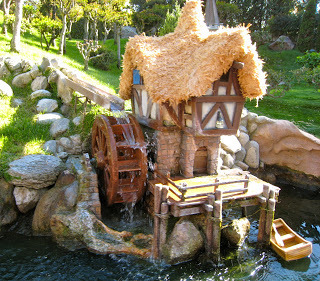
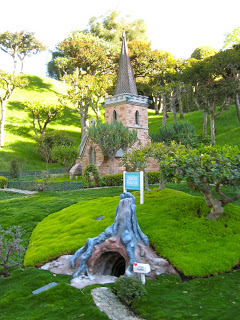
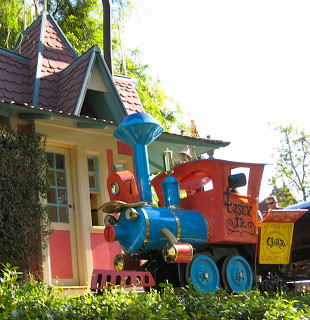
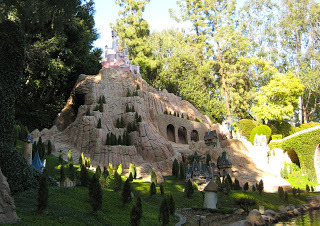
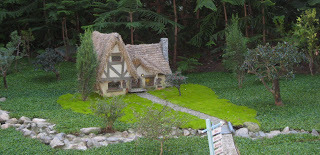
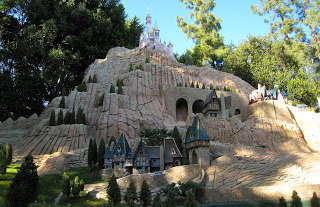
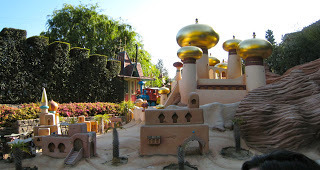
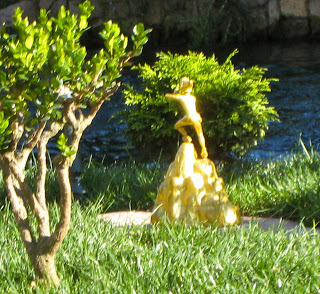
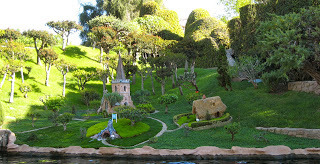
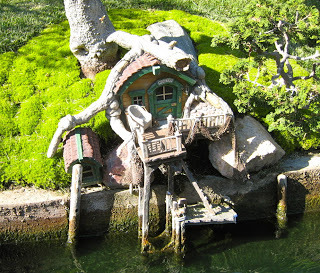
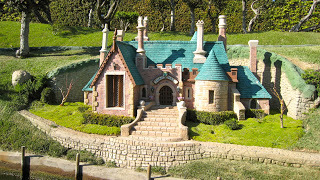
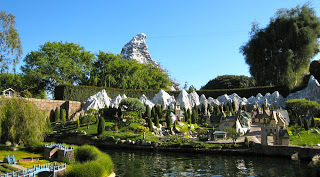
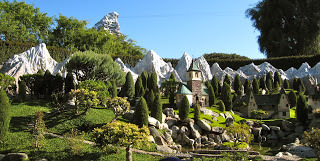

Once you arrive through the front gates you are amazed at how much there is to take in. Over in Adventureland is the Jungle Cruise, which is unlike anything you have ever seen before with its man-made alligators, giraffes, and elephants. In Frontierland, you have many options when it comes to touring the backwoods. You can choose from the Pack Mules, Conestoga Wagons, or a Stagecoach. On the Rivers of America is the Mark Twain paddle-wheeler, the first of its kind to be built in decades. Over in Tomorrowland you can choose to go on the thrilling Flight To The Moon or hover above Earth in Space Station X-1.
Of course, the heart of Disneyland is Fantasyland, which is filled with family favorites such as Peter Pan’s Flight, Mr. Toad’s Wild Ride, and Snow White’s Adventures. As you go north in Fantasyland you come across an attraction where the Cast Members drafted a hand written sign that said, “This ride is not complete.” They were trying really hard to lower the public’s expectations. But why?The Canal Boats of the World promised a ride on the “Boats of Holland, France, England, and America travel through canals which pass the fabulous sights of Fantasyland.” The reality, as former Cast Member Bob Penfield noted, was boats with unreliable outboard engines loudly moving slowly through canals that featured bare banks filled with weeds labeled with scientific names. That is when the boats were not broken down, which was frequent. Penfield said, “They still wanted to ride it. So, the boat would go around land you’d tell them what you knew the ride was going to be…it was kind of a preview of the Storybook Land Canal Boats.” Less than a year later on June 16, 1956, the Canal Boats are no more and they are replaced with another “temporary” attraction - the Storybook Land Canal Boats.
In 1952, Walt was one of the first visitors to Madurodam in Holland. The park was made up of miniature architectural landmarks and landscapes. When he was developing the idea of an amusement park across the street of the Burbank studio, one of the very first plans included a “Gravity Flow Canal Boat.”
In some ways, the Storybook Land Canal Boats is a direct descendent of Walt Disney's Disneylandia project that predates Disneyland. At the time, Walt was working on building 24 "Norman Rockwell-type" miniature stage sets that would travel from city to city by train. Working on the project were some of the very first Imagineers including Ken Anderson, Fred Joerger, Harriet Burns, Roger Broggie, Wathel Rogers, and Harper Goff.
Walt would come up with an idea, get a few people to work the problem, and then be very flexible when it came to change until he was made up his mind. Then that was it. One earliest ideas for the attraction was Gulliver's Travels through Lilliputian Land with animated figures but that proved to be impractical. Another idea was to integrate the new Chicken Of The Sea pirate ship lagoon with the canal boats circling the ship and then returning to the canals. In the area where there is a quilt made of plants, the original proposal also included a giant’s head and shoulders as if he were resting under a blanket. He would have limited animation including moving eyes and his head gently rocking side to side. Walt killed the idea because it would spoil the tranquil feeling of the ride.
In the end, Walt called on “all the genius available at the Studio to recreate, in miniature, three-dimensional scenes from the world’s great folk tales” and enter “new worlds of enchantment.” Imagineer and model builder Harriet Burns said, "Walt came in and he said he had seen miniature cities, both in Canada and in England, and he was most impressed with the one in England. He recalled how charming it was, and how kids and families could walk along the roads and between the buildings. It really intrigued him.” Burns added, "Walt considered this a temporary attraction." Walt said, "“We can do this little ride, and it will be filler for the moment. Later on we can take it out and put something else there.”
The remodel of the Canal Boats was part of a $2 million expansion of Disneyland that included the Skyway, the Astro-Jets, the Rainbow Mine Train, and Tom Sawyer Island. The models were scaled one-inch to one-foot and were made primarily of plywood covered in fiberglass. Walt wanted the sets to be design as if the characters were just out of sight. He was influenced by the Thorne Collection of miniatures that were on display at the 1939 San Francisco Golden Gate International Exposition and now reside in at the Chicago Art Institute.
The level of detail was beyond anything anybody could expect. Harriet Burns recalled a time when she was working on “very elaborate stained glass windows for the church.” The window was designed by Frank Armitage. Burns said, “I was doing all the leading, and working out all the window designs and color. I got to work with the metal shop. I worked the machinery with my foot, and cut the lead pieces, and then beveled them. I really enjoyed that. We really didn’t need to do that – we could have just put celluloid behind Plexiglas. But at that time Walt loved model making, and he loved detail, we did it that way.”
Burns “had cut out 360 pieces of lead for this one great big church window, and Walt came in and picked it up – and I hadn’t soldered it together! It just scattered everywhere! But that is how hands on he was! I picked it up and said, ‘Oh, no problem Walt, no problem.’” What the model builders learned was “if Walt was coming in – have everything glued down because he wanted to play with it so badly!”
Walt was obsessed with the details. Miniatures were his passion. “I hand-hammered all the locks and pulls, and the mailboxes for Moley’s House,” Burns said “I made them out of copper and soldered them all. All of the gutters were soldered copper – every realistic detail that you could think of.” She added that “nobody could really see it, but Walt knew it was there – that was the good part.” When Walt would visit Burns said, “It was so marvelous to see his eyes twinkle, and to see how delighted he was with our toys – well, his toys! He did think of our place as a toyshop.”
The little structures are supported by an amazing feat of landscape architecture magic. Artists used stunted trees, bushes, and fine grasses to create the miniature flora. In an article about the attraction in “E” Ticket magazine, they discovered that Disney’s landscape designer Bill Evans was able to hunt down “a type of evergreen tree found in Van Damme Beach State Park in Northern California for the Black Forest [behind the Seven Dwarfs house]. They are more then 100 years old and are naturally dwarfed. Since they were protected Disney had to buy some from an adjacent landowner who was happy to sell the trees.”
Along with the model buildings and richly detailed landscape were new Dutch Canal boats built by Robert Dorris Boat Works. “E” Ticket noted that “they were converted from gas outboard motors to electric and are individually powered by direct chain drive from the propeller shaft to a GE motor.” There were five different styles of boats, some with teapots on the roof, another with two tillers, while another had miniature stairs. They were sixteen feet long and were guided on a rail like the Jungle Cruise. The initial Fleet was twelve boats but that grew to fourteen.
The attraction opened on June 18, 1956.
The current loading dock is located where the Midget Autopia used to be. Before that, the queue was in front of Monstro the Whale. Guest would be startled when he would occasionally blink his eye and blow his whistle. The little lighthouse was the ticket booth. You leave Fantasyland by entering through the whales mouth, which is not consistent with the film. Walt decided that he was spending a lot of money to build the whale and he wanted to make sure that guests got a good look.
One of the standout landscapes is Gepetto's Village. Gepetto's shop has tiny toys hanging from the windows. Pinocchio even has his own mailbox. The backdrop is the Swiss Alps, which helps to hide the Casey Jr. Train. In later years, the mountain backdrop would blend seamlessly with the Matterhorn. From Gepetto's Village is a bridge that leads to Pig Island with miniature oak trees and the Big Bad Wolf nearby. Dividing the canal is Peter Pan’s London Park. The park has fully mature miniature trees and a gold statue of Peter.
Along one bank is a collection of structures from Alice in Wonderland including Alice’s Cottage, the Old Mill, the Church with the stained glass window, and, of course, the Rabbit Hole.Along another bank is Toad Manor, home of Mr. Toad. The model was so inspirational that the facade was copied and applied in full scale in front of the revamped version of Mr. Toad's Wild Ride in the remodeled Fantasyland of 1983. Further along the canal is the home to the Seven Dwarfs with their diamond mine nearby and 150 year old plus dwarf trees. The highest visual element within the attraction is Cinderella Castle. The castle is over 15 feet tall and uses forced perspective to appear even taller. The obsession with detail was so extreme that the roof of the castle is covered in gold-leaf.
Just beyond the Giant's quilt are three old windmills. Once again the attention to detail was so important that Walt suggested that tulips be planted in front of the windmills. So the Imagineers hired a horticulturist from the San Francisco Bay to locate miniature tulip plants that would fit the scale of the windmills. They found what they were looking for in New Zealand. The only problem was that the plants had 18 inch stems. This meant they had to be buried and hidden. In the end, they could not keep the plants alive so they were removed.
The final scene leads to the boat storage area and has been dubbed Never Never Land because "we never never go there." In 1994, additional scenes were added from The Little Mermaid and the town of Agrabah from Aladdin.
I mentioned earlier that Walt originally envisioned the Storybook Land Canal Boats as a temporary attraction, a placeholder for something grander. In early 1957, a replacement was already in the works. The attraction would be called Rock Candy Mountain and it would incorporate the Casey Jr. train. Harriet Burns said, "Rock Candy Mountain was Walt's idea.” As was the practice at WED Enterprises, a model was commissioned. Burns said, “We created a huge clay mountain, and Walt ordered every kind of candy that he remembered from childhood. Claude Coats went to Toluca Mart, a grocery store near the studio. He got every kind of candy they had: mints, fudge, bridge mix, peanut brittle, and many other things. We used all of it on ‘Candy Mountain.’ Fred [Joerger ] had a sweet tooth and he’d say, ‘One for you, one for me’ [speaking to the mountain]!” According to D23, when the project was put aside “the model was wheeled out to the parking lot and became a giant candy-covered bird feeder!”















Published on June 06, 2012 04:00
June 4, 2012
Book Review: Lots To Do In Line
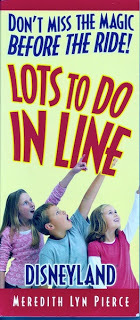 LOTS TO DO IN LINE
LOTS TO DO IN LINEDon’t Miss The Magic Before the Ride!
Meredith Lyn Pierce
268 pages4” x 9”$12.95 Trade PaperbackThe Intrepid Traveler
The FastPass Version: This is the perfect book to prevent meltdowns when you are with a group of people on a relatively busy day at Disneyland. It is also a fun trivia book in a compact, easy to carry format.
The Stand By Version: They say that necessity is the mother of invention and a mother in need was the perfect person to write this book. Although Ms. Pierce had been to Disneyland dozens of times on her first trip with her daughter Camille see began to see the Park in a whole new way. Boredom and a fidgeting kid will do that to you. Those moments in line became more important.
Like most trivia books there is a game to be played. In this case, the author suggests three ways to enjoy her book. You can team up with others and answer the questions as you go along. You can compete against one another individually like a quiz show. I like how she suggests, “This method works best when each player has a copy of the book.” Or you can bring it along and use it was a way to fill in time while standing in line. She limits herself to information that you can only see in the line. Ms. Pierce wants you to “forget the questions and enjoy yourself” while you are on the rides.
Ms. Pierce has added another layer to the game playing with Collections. As you step into a land, the group tries to count all of the weather vanes or pin collectors or funny hats or girls dressed as princesses, etc.
For each attraction there are a number of questions that are stacked in the order from the entrance of the queue to the beginning of the ride. Questions range from checklists marking what you can see, yes/no questions, and multiple choice. The difficulty of the questions range from the perfectly obvious to the really having to give it a go.
With complex queues like Roger Rabbit Car Toon Spin the book is an excellent guide and worthy of letting others pass you by so that you can take in all the details. Then there are the queues for the attractions in A Bug’s Land. She tries her best to make something out of nothing.
Speaking of making something out of nothing, she also covers Disney California Adventure. (I am just joking) Same format, same challenges.
The book also contains Scavenger Hunts for each park.
I tested the book as an individual and as a small group. If your family really likes to look for Hidden Mickeys then you will really enjoy this book. As you can imagine, I am a big fan of anything that gets guests to look around.
The publisher sent me this book for free for the purpose of this review.
Published on June 04, 2012 04:30
May 31, 2012
California Alligator Farm
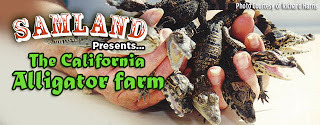
This week I am joined by historian Richard Harris as we explore another of Southern California’s long lost tourist attractions. We are about to visit state’s oldest zoological attraction - the California Alligator Farm.
READ MORE AT MICECHAT
Published on May 31, 2012 08:28
May 30, 2012
THE NON-PC MOUSE
Published on May 30, 2012 01:30

